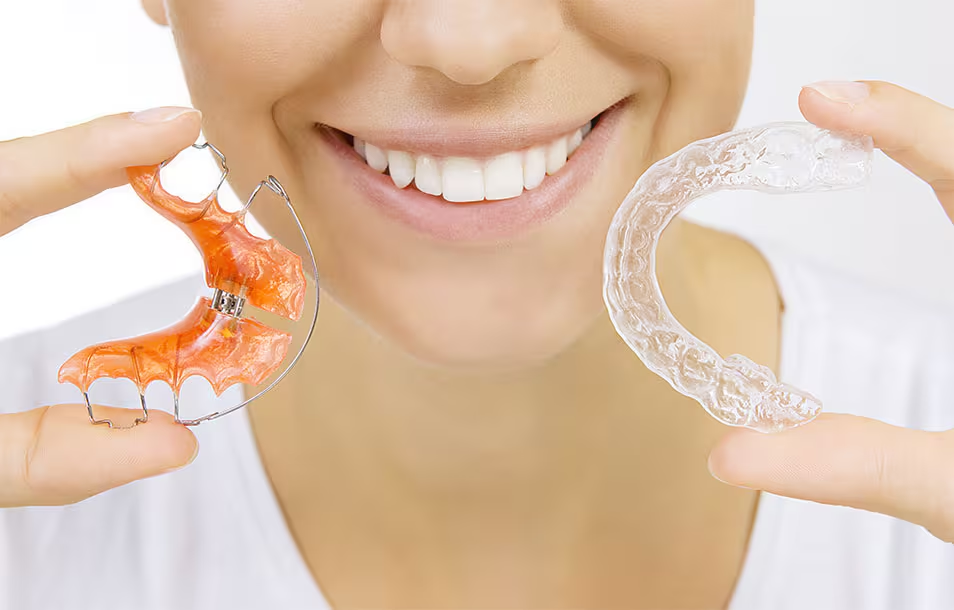Finishing orthodontic treatment is a big moment. After months—or even years—of braces or aligners, your smile looks exactly how you envisioned. But what many people don’t realize is that the real work isn’t over. To keep your teeth straight and your smile looking its best, wearing a retainer is absolutely essential.
Why Retainers Matter After Orthodontic Treatment
When braces or aligners come off, your teeth don’t just “stay” in their new position. The gums and bone around them are still settling. Without support, the teeth can slowly shift back toward their original positions. This process is called orthodontic relapse, and it’s more common than you might think.
Retainers are designed to prevent this from happening. They hold your teeth in their corrected position, giving your mouth time to stabilize and adjust. Without a retainer, even the most perfect orthodontic results can fade over time.
What to Expect When You Start Wearing a Retainer
At first, your retainer may feel tight or slightly uncomfortable—this is normal. Most orthodontists recommend wearing it full-time for the first few months after treatment. Eventually, you’ll likely switch to wearing it only at night.
It’s a commitment, but one that quickly becomes part of your daily routine. Think of it as maintenance. You’ve done the heavy lifting by going through treatment. The retainer simply keeps your hard work intact.
Types of Retainers and How They Work
Retainers come in different forms. Some are removable and made of clear plastic that fits over your teeth. Others, like Hawley retainers, have a visible wire and a plastic base. Then there are fixed retainers, which are bonded to the back of your teeth and stay in place 24/7.
Each has its benefits. Clear retainers are discreet, while Hawley retainers are adjustable and durable. Fixed retainers are great if you’re worried about forgetting to wear one—but they do require a little more care when brushing and flossing.
Your orthodontist will help you choose the one that works best for your needs and lifestyle.
The Risks of Not Wearing Your Retainer
Skipping your retainer can lead to subtle or even dramatic shifts in your teeth. You might notice small changes at first—like one tooth turning slightly or your bite feeling different. But over time, those small changes can add up.
Many people who stop wearing their retainer find themselves needing orthodontic treatment again later in life. That’s not just frustrating—it’s avoidable. Consistent retainer use is a simple way to protect your investment in your smile.
How to Take Care of Your Retainer
Just like your teeth, your retainer needs proper care. It should be cleaned regularly and stored in its case when not in use. Avoid exposing it to high heat or chewing on it, as these things can damage or warp the material.
If your retainer ever feels uncomfortable, cracks, or stops fitting properly, don’t try to fix it yourself. Schedule an appointment to have it checked. A well-maintained retainer can last for years, but it’s important to replace it when necessary.
Long-Term Benefits of Wearing a Retainer
Wearing a retainer does more than just keep your teeth straight. It also supports overall oral health. Aligned teeth are easier to clean and less prone to decay or gum issues. They’re also less likely to create strain on your jaw, which can lead to headaches or other discomforts.
Beyond the physical benefits, there’s the confidence factor. A straight smile often brings a sense of pride and comfort. Maintaining that smile with a retainer helps you hold onto that feeling—whether you’re in front of a camera, at a meeting, or simply laughing with friends.
Don’t Let Your Smile Fade Over Time
It’s easy to assume that once your orthodontic treatment is complete, you’re done. But think of your retainer as the final step in a journey that deserves to be preserved. Wearing it may not be the most glamorous part of the process, but it’s what makes your results last.
Many people regret not taking their retainer seriously. Shifting teeth can be discouraging—especially when it could have been avoided with a little consistency. The good news? It’s never too late to start again. If you’ve stopped wearing your retainer or haven’t had one made yet, your orthodontist can help guide your next steps.
Conclusion:
A straight smile is more than just a cosmetic achievement—it’s a result of time, patience, and commitment. Retainers play a crucial role in making sure that effort pays off for life. By wearing yours as recommended and keeping up with your care, you give yourself the gift of lasting confidence and oral health.
At DF Aesthetics, we’re here to support your smile every step of the way—even after braces or aligners are removed. Whether you need a new retainer, a check-up, or expert advice on how to protect your results, our team is here for you.
Contact us today to schedule your visit and take the next step in maintaining a smile that lasts.


